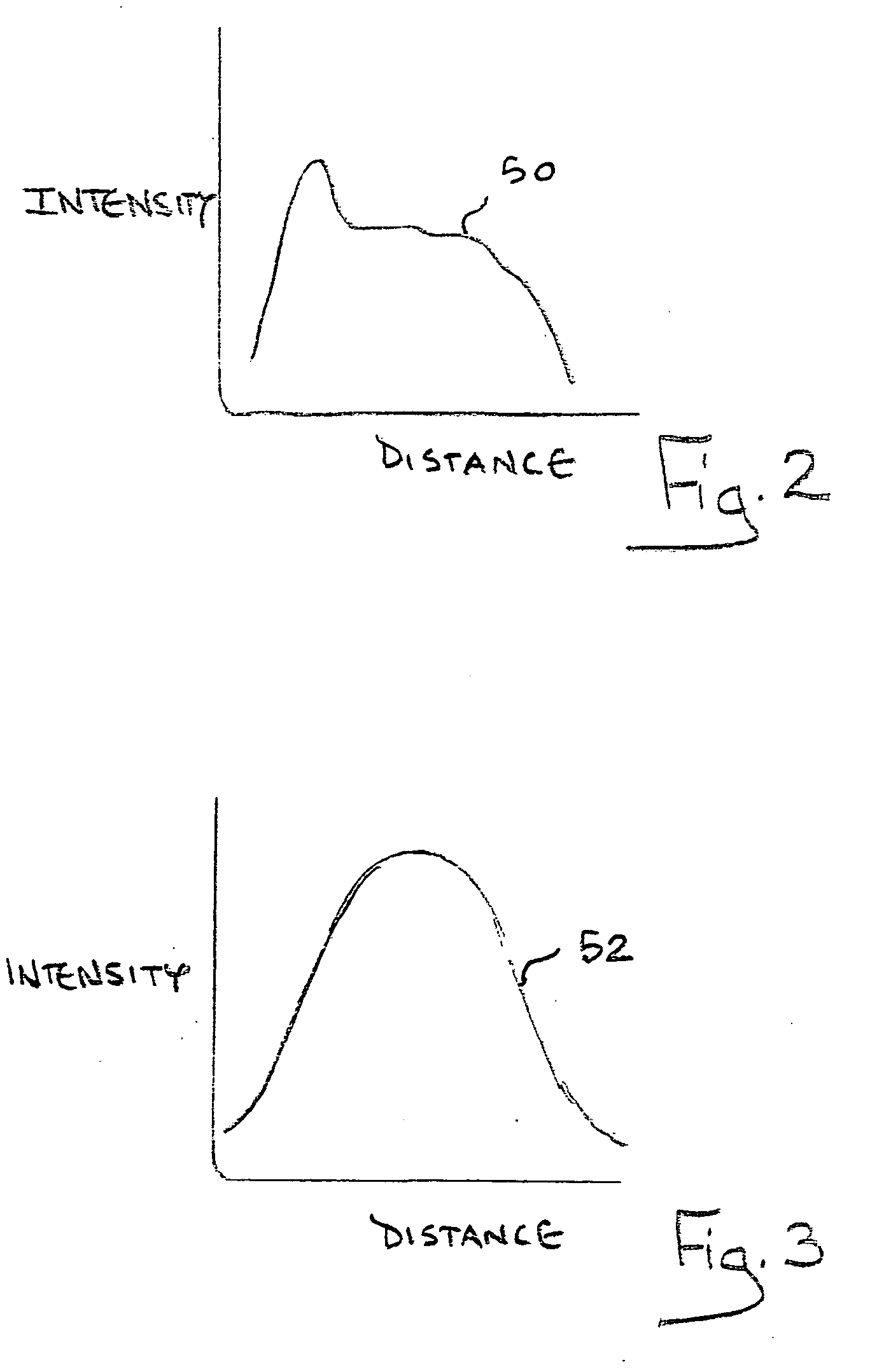Device and method to stabilize beam shape and symmetry for high energy pulsed laser applications
a laser and beam shape technology, applied in the field of pulsed gas discharge lasers, can solve the problems of corresponding degradation of beam uniformity, unstable pulse pulse intensity, and general non-symmetrical intensity along the long axis, so as to increase intensity symmetry increase intensity symmetry
- Summary
- Abstract
- Description
- Claims
- Application Information
AI Technical Summary
Benefits of technology
Problems solved by technology
Method used
Image
Examples
Embodiment Construction
[0019]Referring initially to FIG. 1, a beam mixer 10 is shown for operation on a beam 12 (which for illustrative purposes has been shown as having an upper white-half and a lower black half). As explained in greater detail below, the beam mixer 10 can be used to alter the intensity profile of a beam, e.g. improving intensity symmetry along a selected axis of a beam, can be used to reduce beam coherency, or both. For the embodiment shown, the beam mixer 10 includes a beam splitter 14 and mirrors 16a-c.
[0020]For the arrangement shown in FIG. 1, the beam is initially incident upon the beam splitter 14 whereupon a portion of the beam is directed, via reflection, toward mirror 16a and the remainder is transmitted (with substantially no change in direction) through the beam splitter 14 and exits the beam mixer on an output beam path. In one setup, a beam splitter reflecting about forty to sixty percent of the incident light, e.g. fifty percent, may be used. For this setup, about fifty pe...
PUM
 Login to View More
Login to View More Abstract
Description
Claims
Application Information
 Login to View More
Login to View More - R&D
- Intellectual Property
- Life Sciences
- Materials
- Tech Scout
- Unparalleled Data Quality
- Higher Quality Content
- 60% Fewer Hallucinations
Browse by: Latest US Patents, China's latest patents, Technical Efficacy Thesaurus, Application Domain, Technology Topic, Popular Technical Reports.
© 2025 PatSnap. All rights reserved.Legal|Privacy policy|Modern Slavery Act Transparency Statement|Sitemap|About US| Contact US: help@patsnap.com



